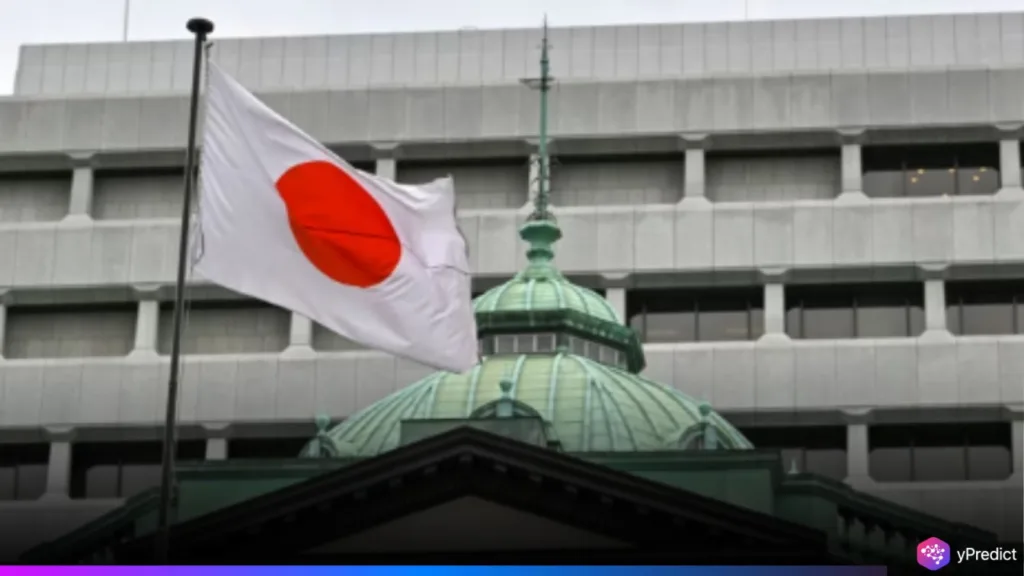
The U.S. Treasury has urged the Bank of Japan to continue tightening monetary policy, citing persistent yen weakness and elevated inflation. In its semiannual currency report, it stressed that further rate hikes are crucial to stabilizing exchange rates and restoring the trade balance.
With the yen near multi-decade lows and Japan’s inflation remaining high, concerns over trade distortions are growing. As the BoJ’s next policy meeting approaches, pressure is building for a more decisive move away from its long-standing accommodative stance.
U.S. Pressure Builds on BoJ Monetary Policy
According to Reuters, in its most recent semiannual currency report to Congress, the US Treasury Department urged the Bank of Japan (BOJ) to continue its path toward monetary tightening, arguing that such a policy shift could help stabilize the yen and address long-standing trade imbalances between the two economies. The treasury said in the report that,
BOJ policy tightening should continue to proceed in response to domestic economic fundamentals including growth and inflation, supporting a normalization of the yen’s weakness against the dollar and a much-needed structural rebalancing of bilateral trade.
The U.S. Treasury urged Japan to adjust interest rates in line with domestic growth and inflation, aiming to reverse the yen’s extended weakness. The currency’s sharp decline has boosted exports but raised import costs, contributing to trade imbalances and market instability. Although Washington stopped short of naming Japan a currency manipulator, it added the country to its monitoring list for closer exchange rate oversight.
The Treasury report also underscored the need for neutrality in foreign exchange markets, advising Japan’s public investment bodies, including major pension funds, to focus on long-term returns and diversification, rather than using overseas investments to impact currency values.
This pointed guidance marked an unusual level of U.S. involvement in Japan’s internal financial policy, drawing attention to the BOJ’s prolonged ultra-low interest rates, widely viewed as a major factor behind the yen’s sustained weakness.
BoJ’s Delicate Balancing Act
Responding to the report, Japanese Finance Minister Katsunobu Kato reiterated that the independence of the BOJ remains intact, stressing that the central bank is solely responsible for determining the appropriate direction of monetary policy. Speaking at a press conference, Kato declined to comment on specific recommendations made by the U.S. Treasury but did affirm that pension fund strategies are naturally guided by fiduciary goals, not currency intervention.
The Bank of Japan began stepping away from its ultra-loose policies earlier this year, raising short-term interest rates to 0.5% and abandoning yield curve control. However, Governor Kazuo Ueda has signaled caution regarding additional hikes, citing slow wage growth and fragile consumption despite headline inflation surpassing 3% for several consecutive months.
The analysts remain divided. A survey showed a majority expect the BoJ to maintain its current policy stance until at least September, with modest tightening expected toward the end of the year. Meanwhile, former top currency diplomat Mitsuhiro Furusawa said the yen could strengthen to 135–140 per dollar if interest rate differentials narrow later in 2025.
Conclusion
After ending years of aggressive stimulus, the BOJ raised short-term rates to 0.5% in January, reflecting optimism about reaching its 2% inflation goal. However, rising U.S. tariffs have since pressured Japan’s economy, leading the central bank to lower its growth forecast in May. Markets view the BOJ’s gradual tightening as a key factor behind the yen’s persistent weakness.
As the BOJ prepares for its upcoming policy meeting on June 16–17, markets widely expect the central bank to keep interest rates steady, maintaining a wait-and-see approach amid global economic uncertainty.







